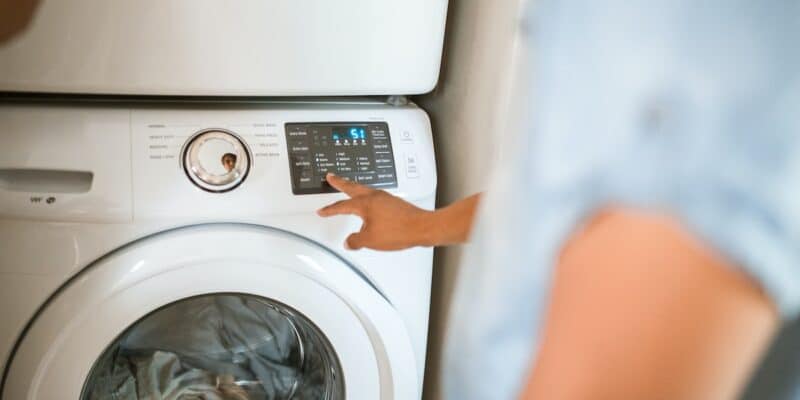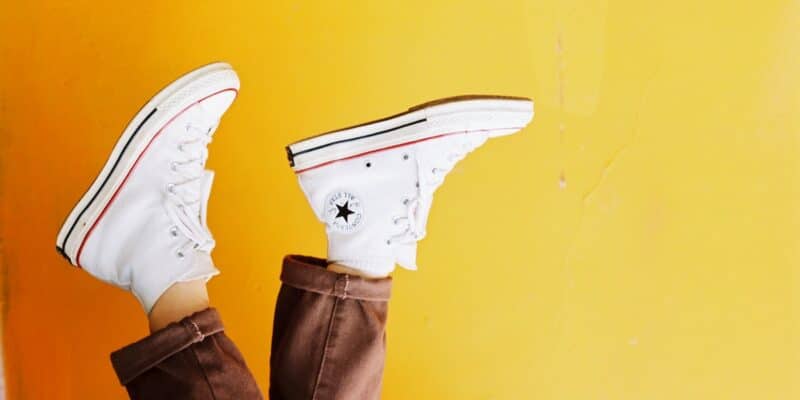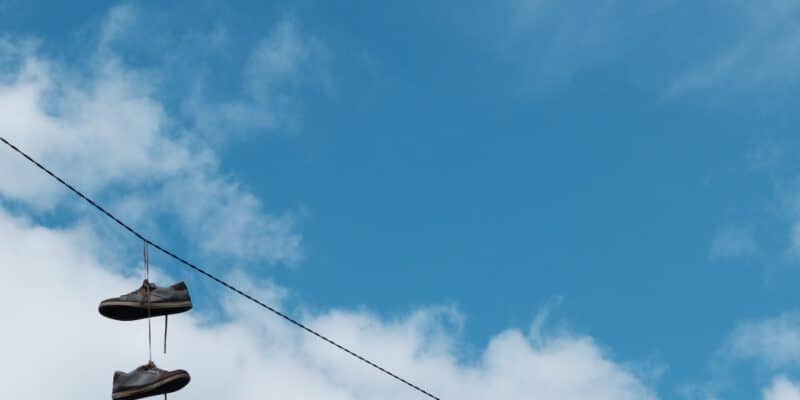What’s not to love about a freshly purchased, bright, clean pair of white shoes? In recent years we have seen the white footwear trend reach highs across the globe.
It’s not surprising we see them paired not only with casual clothes, smart business wear, summer dresses but even a bride in white walking down the aisle in her comfy whites! They are no doubt the most versatile shoes on the market.
The trend seems to be one to stay, but is it all white and shiny in the world of white shoes? Let’s look into some of the cons of our much loved whites.
Whether you’re rushing to work on the subway, going out for casual drinks with your friends or treading carefully and only wear your white shoes on special occasions … it’s inevitable, these babies will get dirty.
The biggest concern about a pair of white shoes is how to keep them looking as white as they were, when you first saw them, gleaming at you, in the sneaker store. Let’s not forget, it can be scary throwing your expensive kicks into the wash.
Here we will explore how to keep your white shoes clean, using the easiest method, a washing machine.
As an Amazon Associate, I earn from qualifying purchases. The links below may be affiliate links. Please read my disclosure policy for more information.
Why a Washing Machine?

Convenience, let’s be honest, many of us just don’t have the time to mix up a homemade super cleaner and scrub our shoes every time they get dirty. Bleaching shoes may seem fast and tempting, but avoid using this method.
Bleach must be carefully diluted to achieve the correct solution; this will vary depending on your shoes. If this solution ratio isn’t correct you will be left with yellow footwear!
Using a washing machine is much more reliable, effective and gives us time to catch up on more important tasks. Of course, there are many other ways of getting those whites white, but we want a reliable fix, and this is it.
Shoes are unlikely to cause damage to your machine when washed in a bag and on the correct cycle. The correct cycle ensures less tumbling around inside the drum.
We will also be exploring what you can add to your machine drum with your shoes, not only will other items get cleaned but you’ll also be cushioning those whites.
Know Your Shoes

Care instructions are vital to the outcome of your cleaning mission. Be sure to check the care label in your shoes.
Things to look out for are the material type and whether your shoes are machine washable. If your shoes are machine washable, the care label will have clear instructions on water temperature, this may read 30 or similar in a bucket shape with a wavy top line.
If you don’t see this symbol and have a bucket shape with a hand, this means your item is hand wash only. Of course, many people still wash their hand wash only whites, in their washing machine, but this will always be at your own risk.
Once you are comfortable your shoes are machine washable ensure to select the correct cycle temperature on your machine.
Choosing which shoes to buy is also a challenge. When choosing white shoes be sure to check the material, as various materials are harder to keep clean.
Your care label will confirm which material your shoes are made from. It’s important to note that leather or suede sustain water damage and it would be advised not to wash these in a washing machine.
Nylon and polyester are synthetic materials thus making them hard-wearing. These materials can be washed multiple times in a washing machine.
Lastly, it’s important to check if any detailing on your white trainers is in a colored material. Although these may still wash in a machine, detailing may either bleed color or fade.
What Will I Need?
It’s important you give your white shoes plenty of love during the cleaning process as you do when you slip them on.
Understandably they’re a valuable addition to your shoe collection, so tread with care. Try not to clean on impulse as small mistakes may prove to be irreversible.
Most of these items you will have in the home already, if not they are really easy to get hold of:
- Soft brush/old toothbrush
- Cloth
- Liquid or pod detergent
- Wash/mesh bag or cushion cover
- Towels or sweatshirts (whites and neutrals)
How To Prepare
Adding shoes covered in mud and residue will potentially ruin your machine. Without adequate care, washing machines can become breeding grounds for bacteria, and this will leave your machine dirty on the inside.
So make sure you remove this excess dirt before they go in for a wash. This isn’t the only thing we need to consider before we throw them into our machine.
Follow each of the steps below to best prepare your shoes for a wash cycle.
- Untie and remove shoe laces.
- Clean off any excess dirt on your shoes with an old toothbrush or soft brush.
- Make sure to brush your sole well, as soles often have ridges with hard to remove dirt. This will allow your washing machine to clean away any remaining dirt effectively.
- Stubborn scuff marks can also be cleaned with a wet cloth and a little detergent.
- Insoles can soak up plenty of water when washed in a machine. These may take longer than your shoes to dry.
- If you need your shoes dry and ready to wear as soon as possible, it’s advisable to remove insoles and wipe them by hand with a wet cloth and a little detergent. Alternatively, you can wash them thoroughly by hand.
- Whilst they are still wet, sprinkle the insoles with baking soda and let them sit overnight to deodorize and soak up remaining moisture. If you have ample time to let your shoes dry, you can most definitely throw the shoes into the washing machine with their insoles intact.
- Place your shoes and the laces into your wash bag. Wash bags are available at little cost, however, an easy alternative is an empty cushion cover.
- Your wash bag can now go into your washing machine drum. You can wash 2-3 pairs of shoes at the same time, depending on the size of your machine drum. But it’s important to note they must all be in separate wash bags to avoid less damage.
- As shoes are harder than our regular laundry, washing them can be extremely noisy. To avoid this, add a few towels or sweatshirts to the washing machine.
- Be sure to only add white, or near white fabrics. New items should also be avoided as these may leach excess dye and stain your whites. Make sure you choose your buffers wisely.
Can I Use My Regular Detergent?
If you use liquids or pods, yes! But avoid using powdered detergent when washing your footwear. Washing on a cold cycle can leave powdered detergent undissolved.
This undissolved powder will clog in and around your shoes. Make sure to use liquid or pods to help the cold cycle do its job.
Avoid adding extra detergent. Extra detergent will not clean your shoes more thoroughly, much the contrary. You may be left with dense sticky shoes where the extra detergent has not managed to wash out.
Starting the Washing Cycle
A cold wash is essential for washing your shoes. Hot water cycles may alter the size of your shoe by causing some shrinkage.
According to Tide (part of the P&G family) By switching to cold, you can save on average 90% of the energy you use with every load of laundry.
Whilst most machines can go as low as 20c, a cold wash setting is usually 30c. Select a cold or delicate wash setting with a low or no-spin.
How Should I Dry Them?

As mentioned previously, heat is the prime cause of shoes shrinking. Although it’s extremely tempting to throw your shoes into the dryer its highly advisable not to.
Tumble dryers can cause considerable damage to your shoes, from melting glue to shrinkage. Always air dry your shoes to preserve them as best you can.
Depending on the material, thickness of sole and cycle used, shoes will retain different amounts of water. Most shoes will take a day or longer to dry thoroughly.
Avoid wearing shoes which are slightly damp. According to a podiatrist at Cornerstone Foot & Ankle, wet shoes not only cause discomfort, but also can develop into Athlete’s foot.
Follow the following steps to ensure your shoes dry as fast and effectively as possible:
- Leave laces to dry without lacing them back into your wet shoes.
- Remove insoles and dry them separately. Insoles are made from porous material; they may take longer to dry than your shoes.
- Flip the tongue out of the opening and pull back to allow the inside of the shoe to air well.
- Leave shoes to air dry until they no longer feel damp. Press down firmly inside the shoe to check for any remaining moisture.
When Can I Wear my White Shoes?
Once your shoes are fully dry you are ready to wear your bright whites again! This could be anything from the next day to a few days later.
As mentioned previously, make sure they have no moisture remaining or your feet will be at risk of infections. Slip your insoles back inside and lace your shoes up again.
Add that brightness back to your outfit and show off your clean, classic, timeless white shoes!
Long-Term Tips
If white shoes are looked after correctly, they can last a lifetime. Store your shoes in a dust-free environment, placed in shoe boxes.
Don’t allow dirt to sit for too long as this can cause long-term staining, make spot-cleaning a habit as this will avoid permanent damage. Proper laundering is key to the lifespan of your footwear, so tread carefully!




